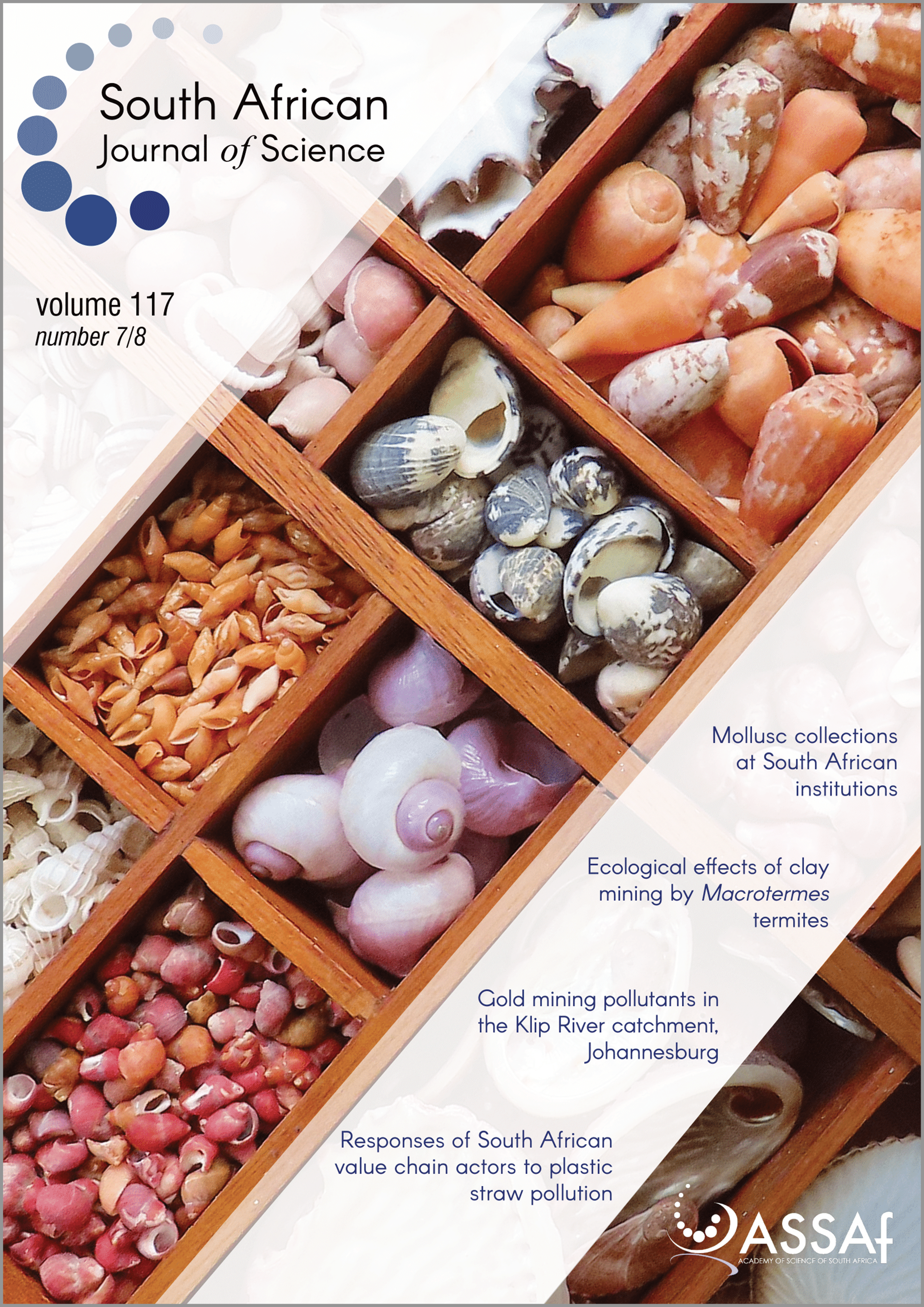
About the cover:
Mollusc collections are among the oldest natural science collections in South Africa. Cole collates information about these diverse collections scattered across South Africa.
Photo: Kevin Cole.
Full online issue available here.
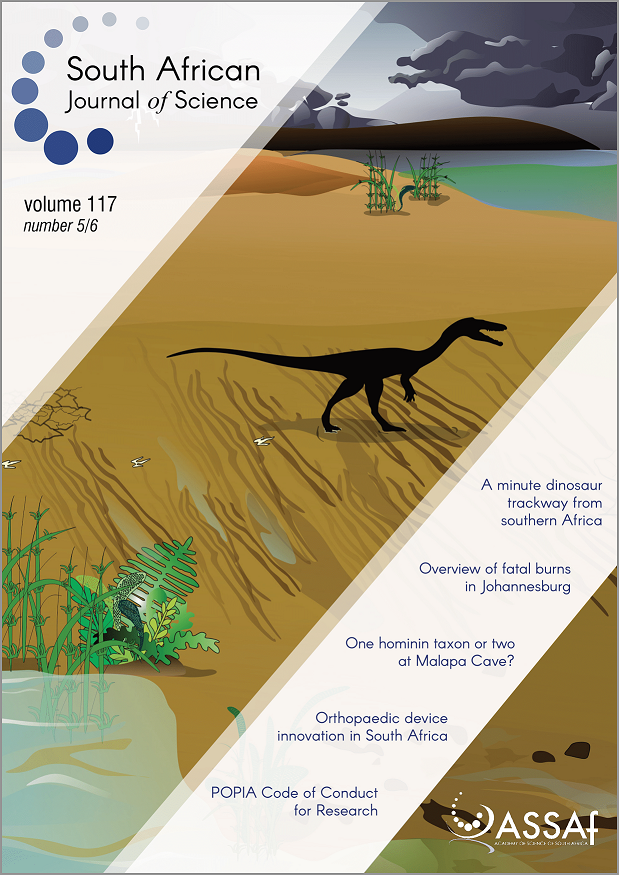
About the cover:
Palaeoenvironmental reconstruction of the Grallator trackway in the lower Clarens Formation at the Storm Shelter ichnosite in the Eastern Cape, South Africa (modified after the original artwork by Akhil Rampersadh and Emese M. Bordy). Bordy documents this newly discovered Early Jurassic trackway.
Full online issue available here.
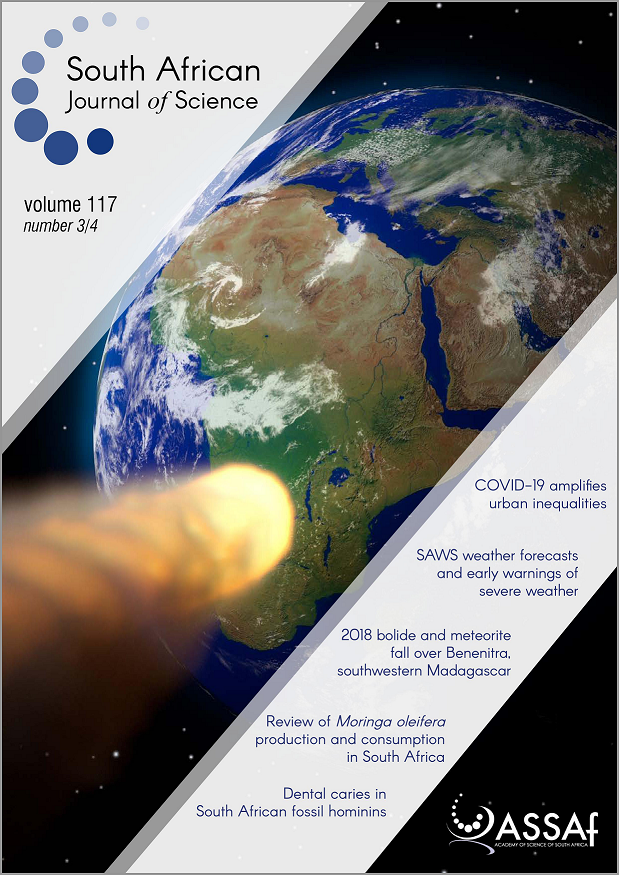
About the cover:
A meteor fireball (or bolide) approaching the Earth’s surface. During the early evening of 27 July 2018, residents in southwestern Madagascar observed a rapidly moving bright light in the sky which exploded into multiple smaller glowing fragments. In their article, Gibson and colleagues confirm that this event was a meteorite fall – only the second known meteorite fall over Madagascar and the first that can be linked to a bolide.
Full online issue available here.
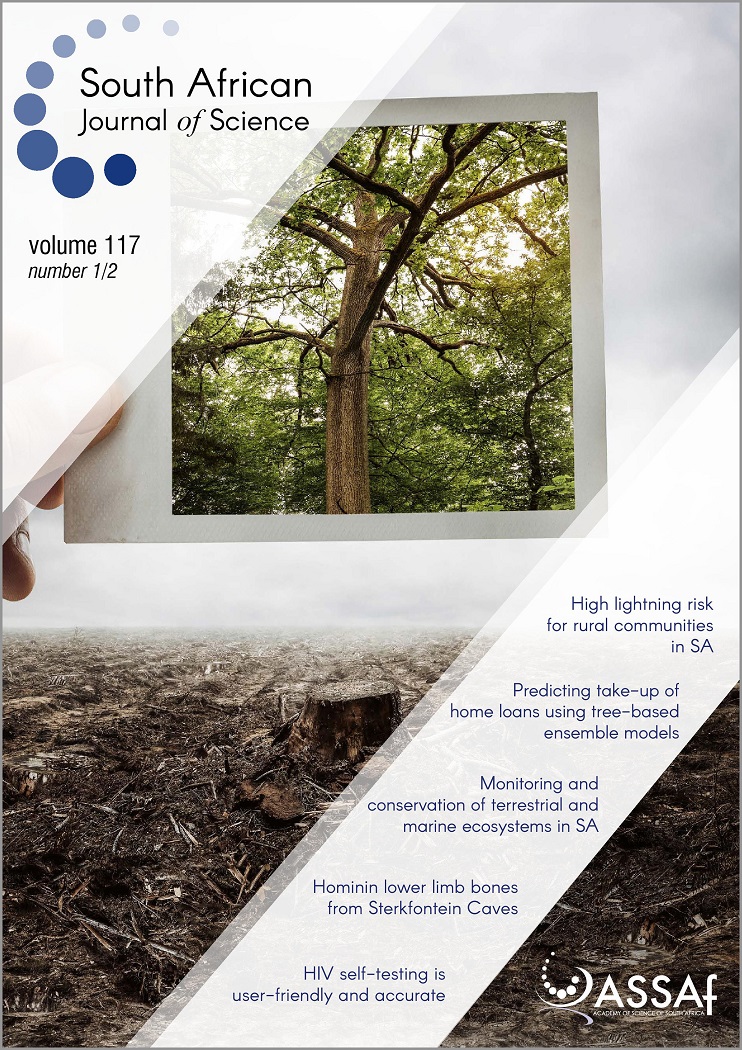
About the cover:
As we enter the UN Decade of Ecosystem Restoration (2021–2031) with the goal “to prevent, halt and reverse the degradation of ecosystems on every continent and in every ocean”, several articles in this issue report on the need for or efforts towards monitoring and conservation of terrestrial and marine ecosystems in South Africa (image: ©Nastco).
Full online issue available here.
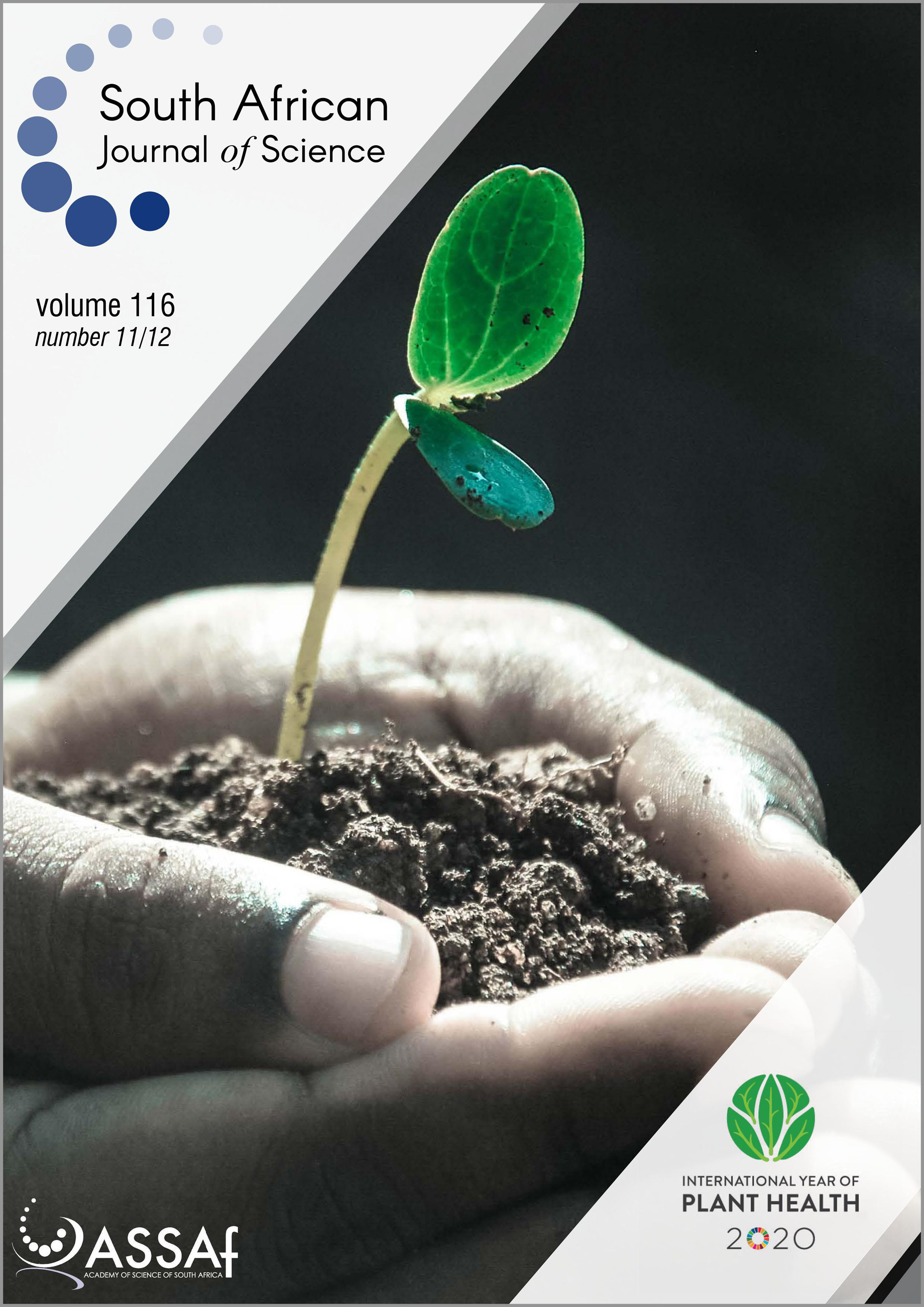
This special issue commemorates the International Year of Plant Health 2020 and will serve as an excellent source of the latest research, reviews and commentaries from leading plant pathologists and entomologists in South Africa. It will inform not only plant pathologists and food growers, but also policymakers and the public of the importance of plant health. As Mirko Montuori (UN Food and Agriculture Organization) states in his Commentary, ‘…our own health depends on plants while the health of plants depends on us’.
Full online issue available here.
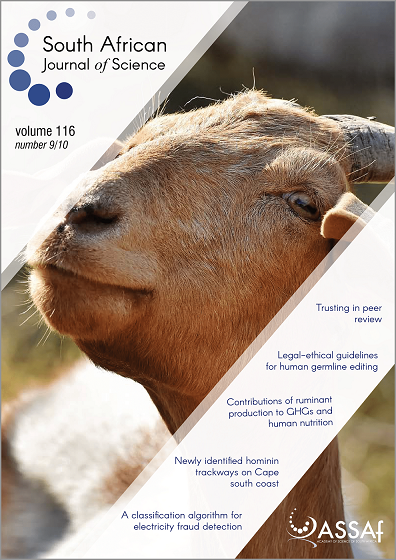
About the cover:
Ruminant production plays a vital role in human nutrition and livelihoods. Scholtz and colleagues provide a balanced perspective on this role and the contribution of ruminants to greenhouse gas emissions.
Full online issue available here.

About the cover:
Baobab trees. In an article in this issue, Kotzé identifies characteristic solar periodicities from carbon isotope data of 1000-year-old baobab trees.
Full online issue available here.
Special compilation: More eyes on COVID-19:
This issue also includes a series of Invited Commentaries that seeks to provide ‘more eyes’ on the COVID-19 pandemic by drawing in perspectives from experts in the social sciences and humanities. Cover image: Mucsi Márton (CC-BY-SA-4.0)
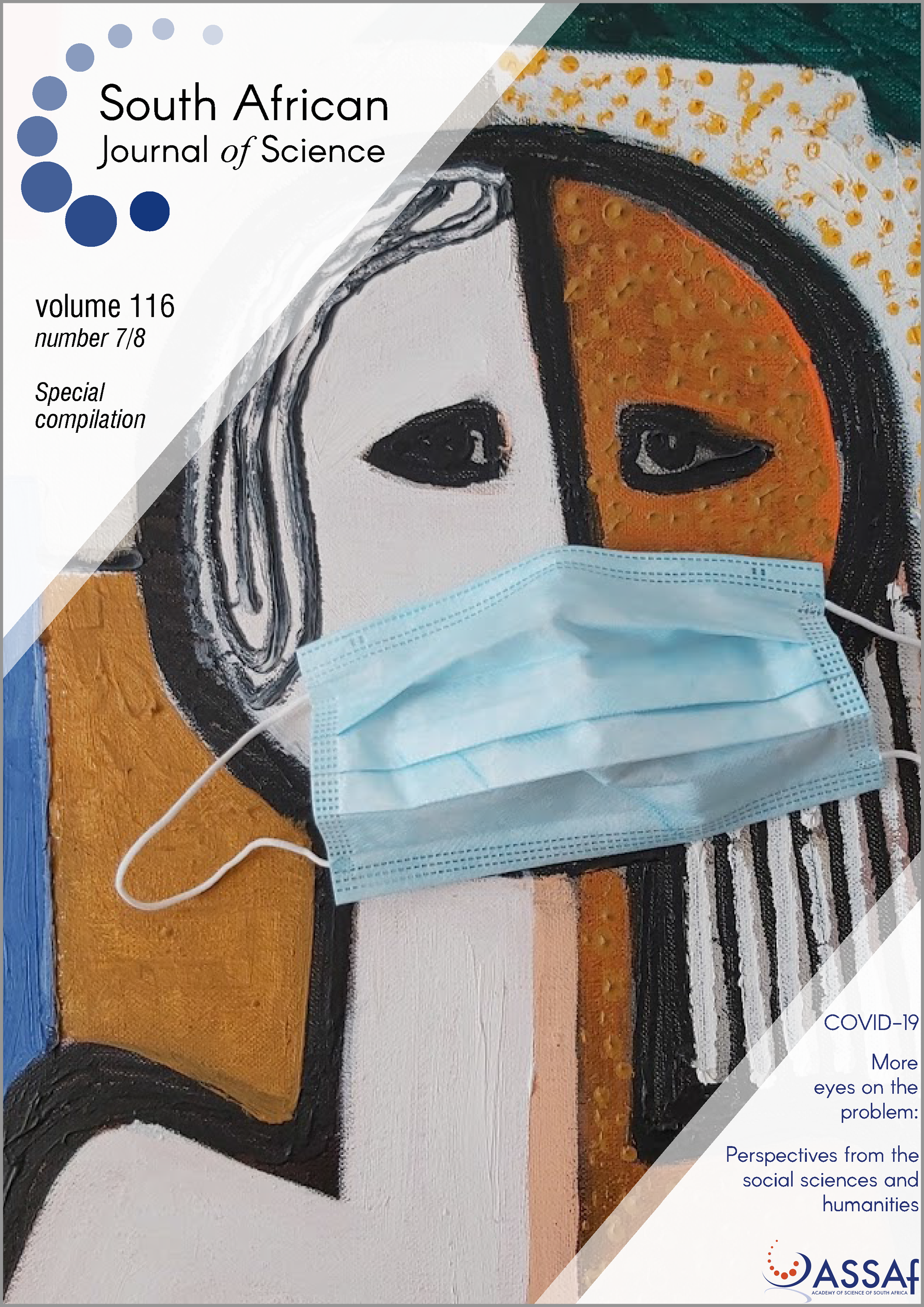
A series of Invited Commentaries that seeks to provide ‘more eyes’ on the COVID-19 pandemic by drawing in perspectives from experts in the social sciences and humanities. Cover image: Mucsi Márton (CC-BY-SA-4.0)

Intellectual and social critique: The role of the South African Journal of Science. This special issue is a compilation of responses to a Commentary by Professor Nicoli Nattrass published in the South African Journal of Science (vol 116 no 5/6) entitled Why are black South African students less likely to consider studying biological sciences?
Cover image: word cloud created from the authors’ keywords
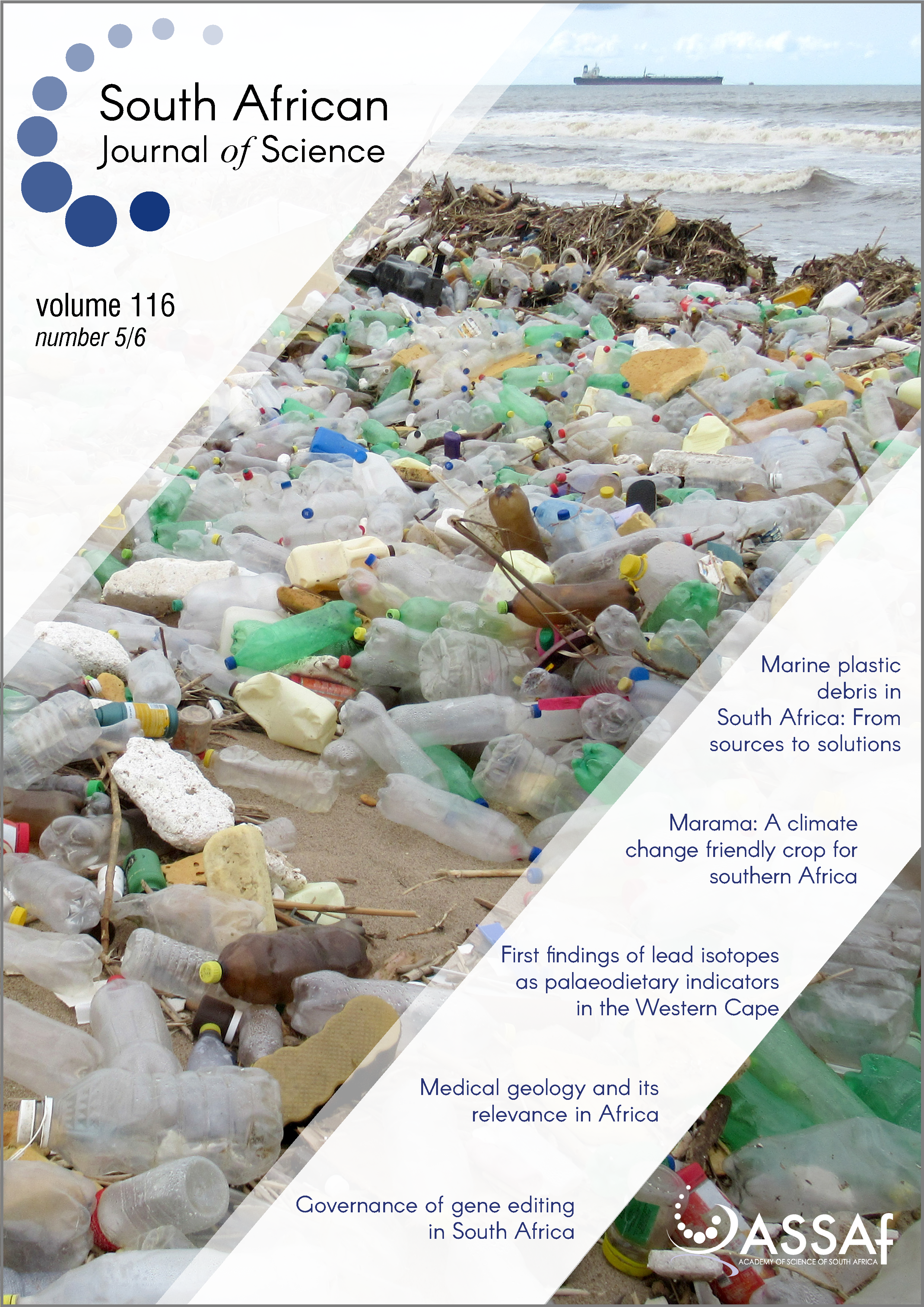
About the cover:
Plastic waste on a South African beach. A series of reviews in this issue provides the latest information on the sources, pathways, impacts and monitoring of marine plastic debris in South Africa. Photo: Douw Steyn, PlasticsSA.
Full online issue available here.
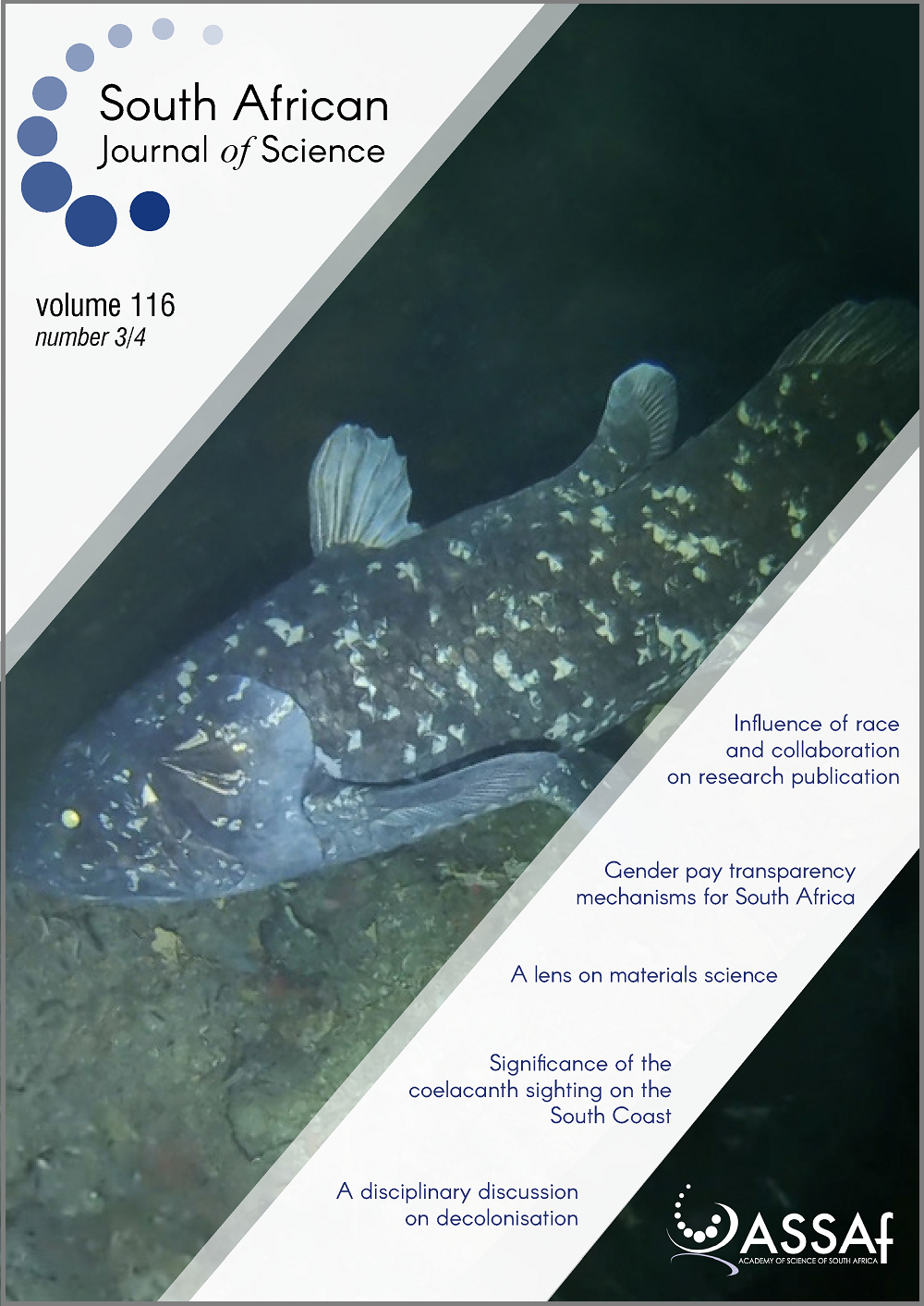
About the cover:
Coelacanth sighted off Pumula on the KwaZulu-Natal South Coast, South Africa, on 22 November 2019. Bruton et al. describe the sighting and its significance in their Commentary. Photo: Bruce Henderson
Full online issue available here.

About the cover:
A windmill in the Karoo, South Africa. In an article in this issue, Toerien explores the link between tourism and poverty in rural South African towns located on Route 62, the N1 and N9. Image CC-BY 2.0: South African Tourism.
Full online issue available here.
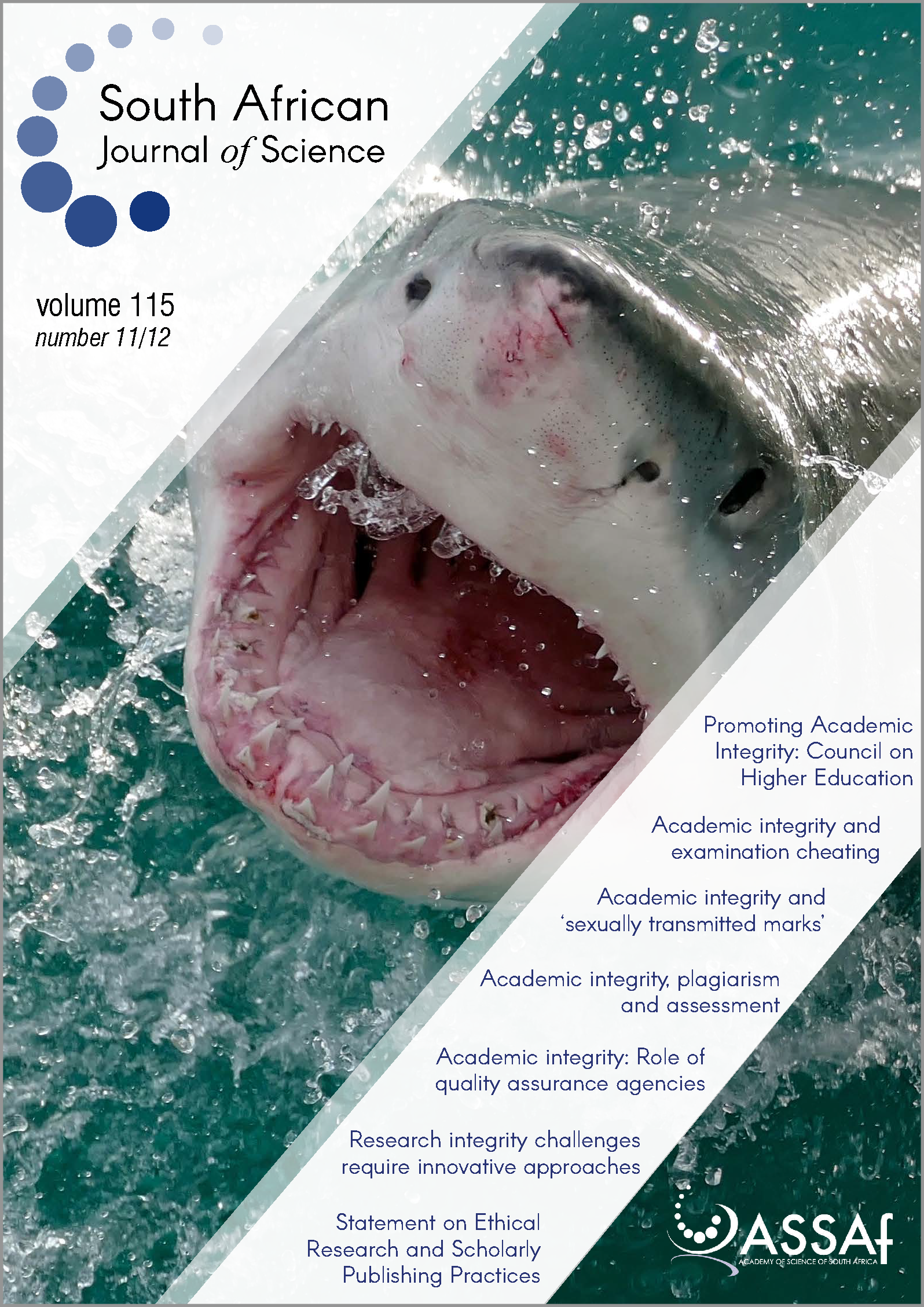
About the cover:
A white shark (Carcharodon carcharias) in Gansbaai, South Africa (photo: Bernard DUPONT, flickr, CC-BY-SA). In this issue, Gennari, Morse and colleagues investigate the antibiotic sensitivity of bacteria isolated from the oral cavities of white sharks.
Other articles in this issue explore a different kind of predator – an academic predator – how to identify them and to protect academic integrity from becoming their victim. This themed issue on Promoting Academic Integrity emanates from the 2019 Conference of the Council on Higher Education and its publication is sponsored by the Council on Higher Education.
Full online issue available here.
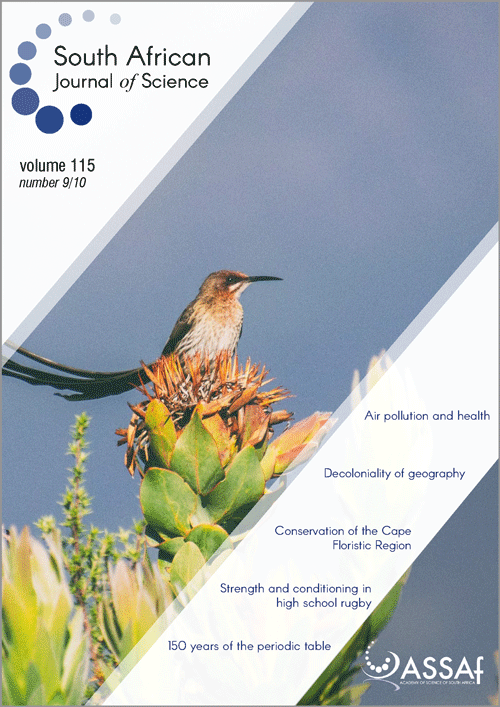
About the cover:
A Cape sugarbird (Promerops cafer) among the fynbos of the Cape Floristic Region. This species is one of several endemic to the Fynbos Biome. In this issue, Allsopp and colleagues identify research questions for the conservation of the Cape Floristic Region.
Full online issue available here.
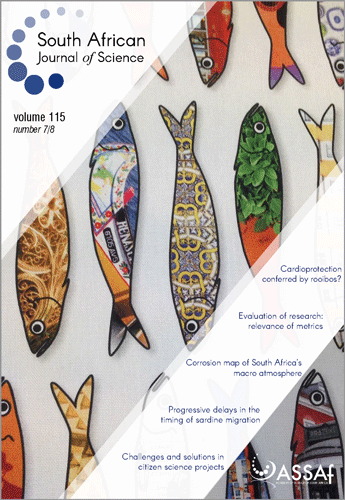
About the cover:
The iconic sardine. In an article in this issue, Fitchett and colleagues examine the progressive delay in the timing of South Africa’s annual sardine migration.
Full online issue available here.
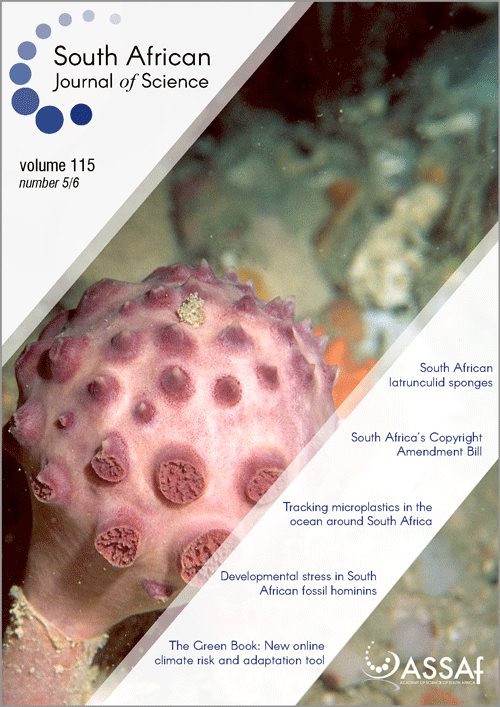
About the cover:
Tsitsikamma pedunculata – a South African latrunculid marine sponge species (image: Patrick L. Colin and Lori Jane Bell Colin, Coral Reef Research Foundation). Davies-Coleman and colleagues present the multidisciplinary and collaborative research conducted on the diverse Latrunculiidae family of South African sponges in an Invited Review.
Full online issue available here.
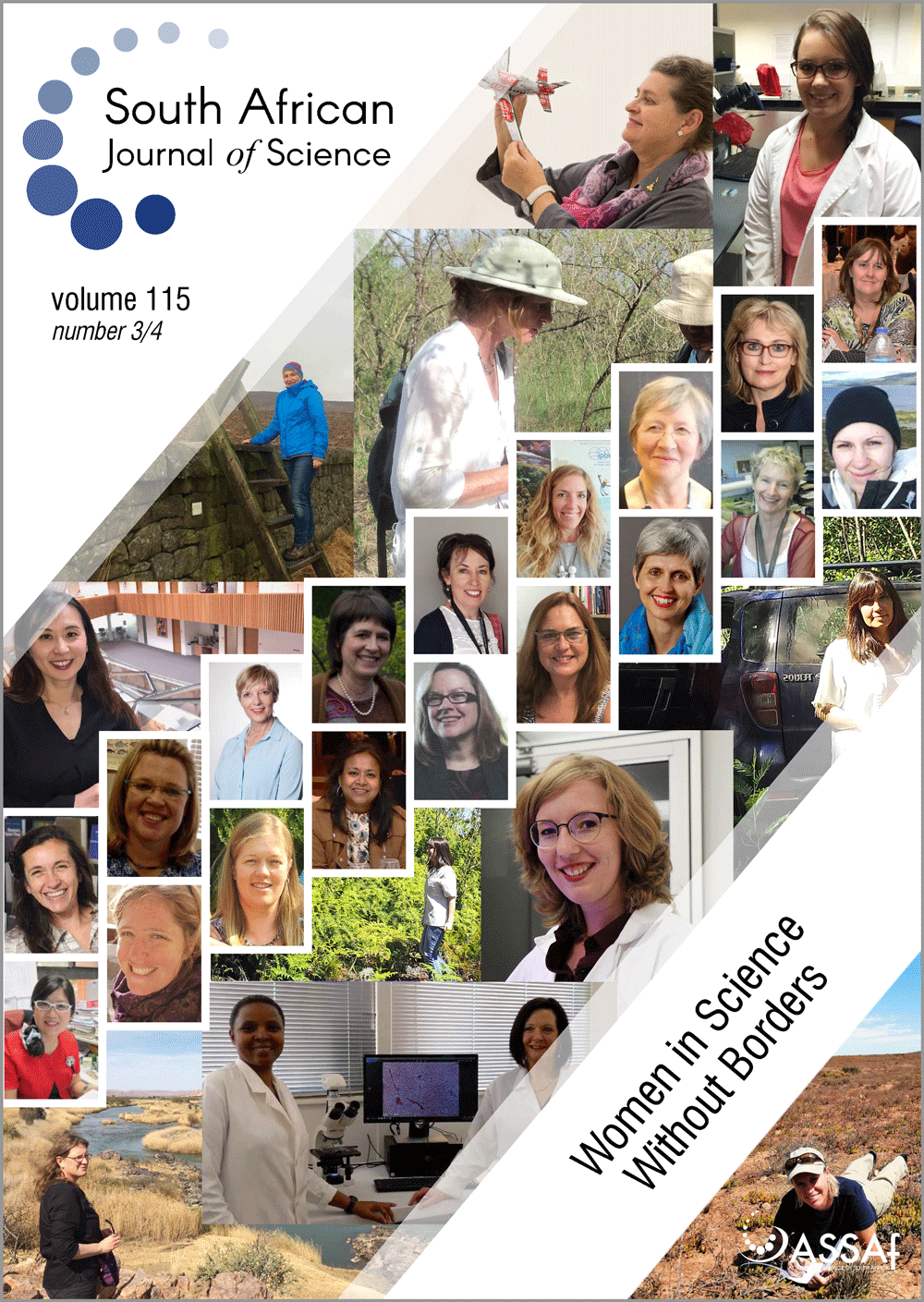
About the cover:
‘Women in Science’: The women in science who have contributed to articles in this issue (images courtesy of the authors). The theme of this issue emanated from the 2nd International Women in Science Without Borders conference. Selected research papers presented at the conference were submitted and reviewed for publication.
Full online issue available here.
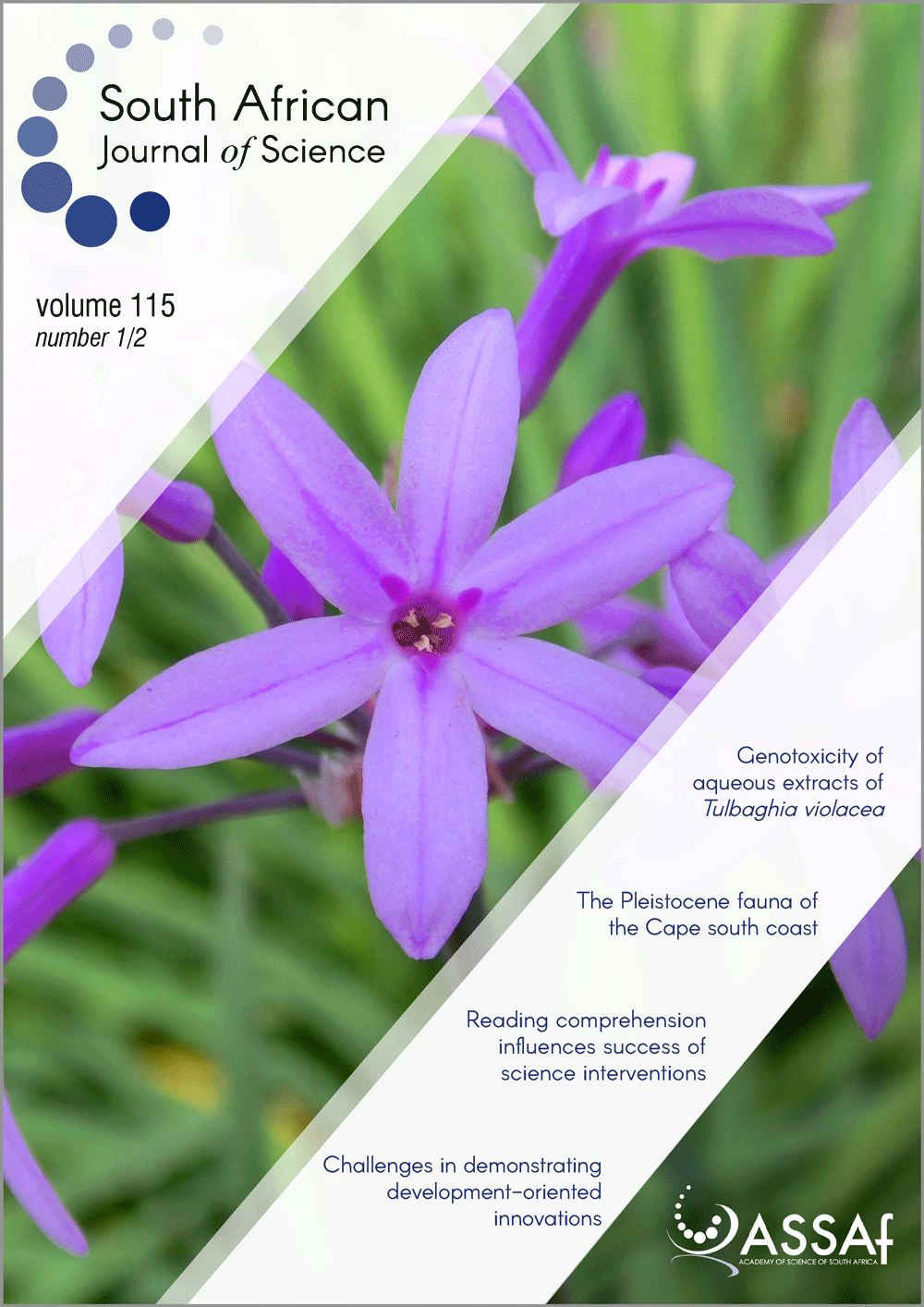
About the cover:
Tulbaghia violacea. Madike and colleagues report on the genotoxicity of aqueous extracts of Tulbaghia violacea – a plant commonly known as wild garlic and used in traditional medicine for the treatment of various ailments. Photo: Krzysztof Ziarnek/CC-BY-SA-3.0.
Full online issue available here.
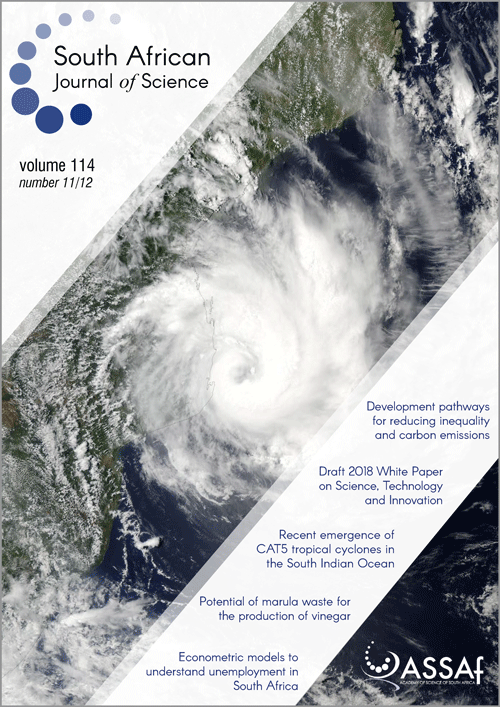
About the cover:
Tropical cyclone Dineo – a CAT1 storm – just off the coast of Mozambique on 15 February 2017 at 6:15 a.m. EST (1115 UTC), captured by NASA’s Aqua satellite (image credit: NASA Goddard MODIS Rapid Response Team). Fitchett explores the recent emergence of CAT5 tropical cyclones in the South Indian Ocean.
Full online issue available here.
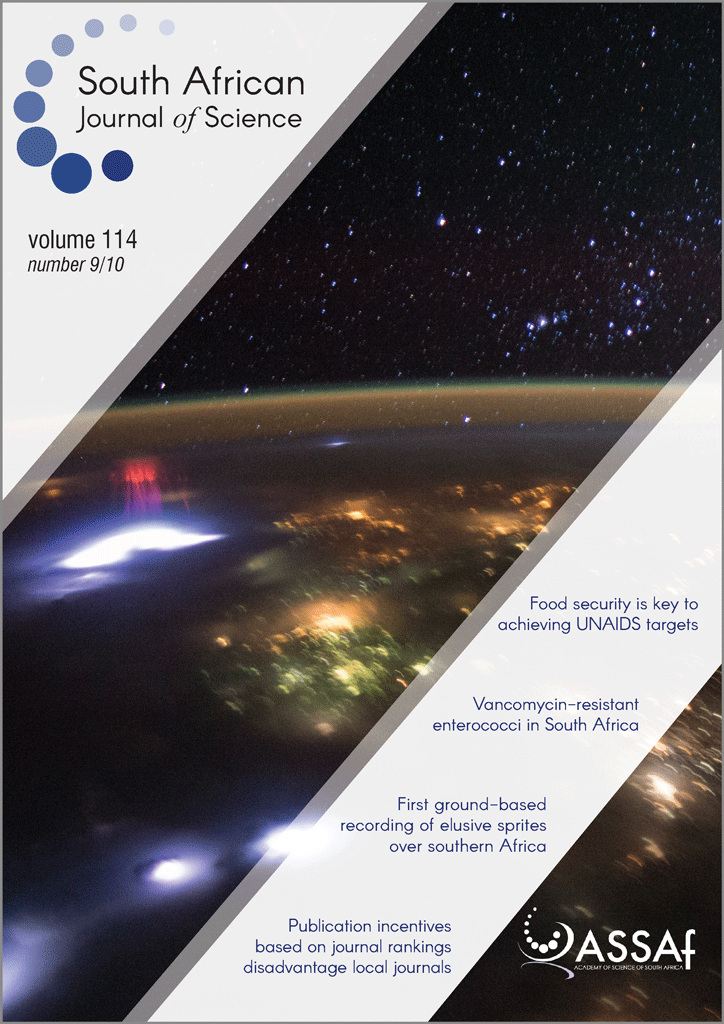
About the cover:
In an image captured from the International Space Station, a red sprite can be seen above a lightning flash (image: NASA). Nnadih and colleagues present the first ground-based recordings of sprites over southern Africa.
Full online issue available here.
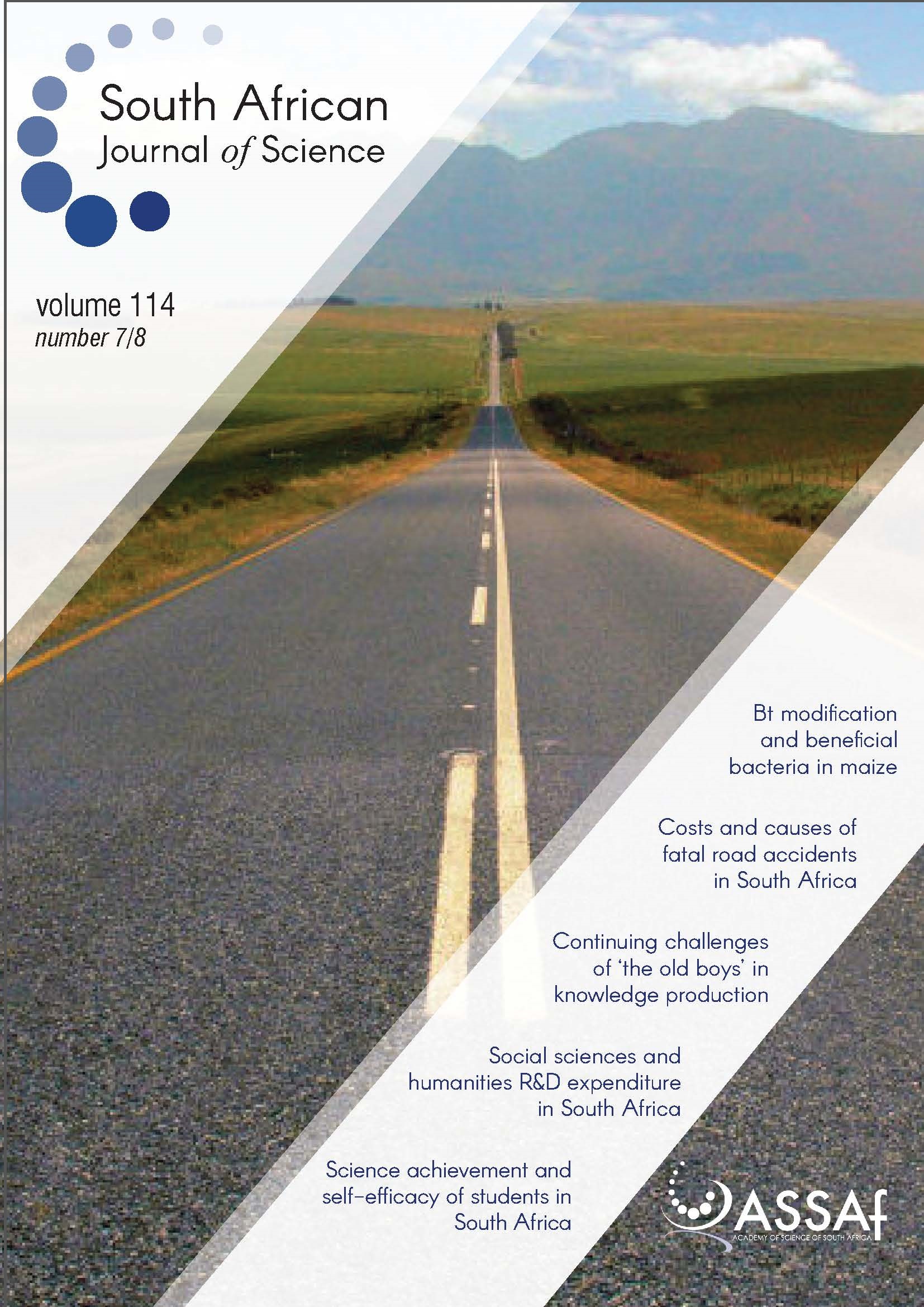
About the cover:
A road in South Africa (photo CC: Steve Cornish, flickr). Verster and Fourie analyse the costs and causes of the many fatal road accidents in South Africa.
Full online issue available here.
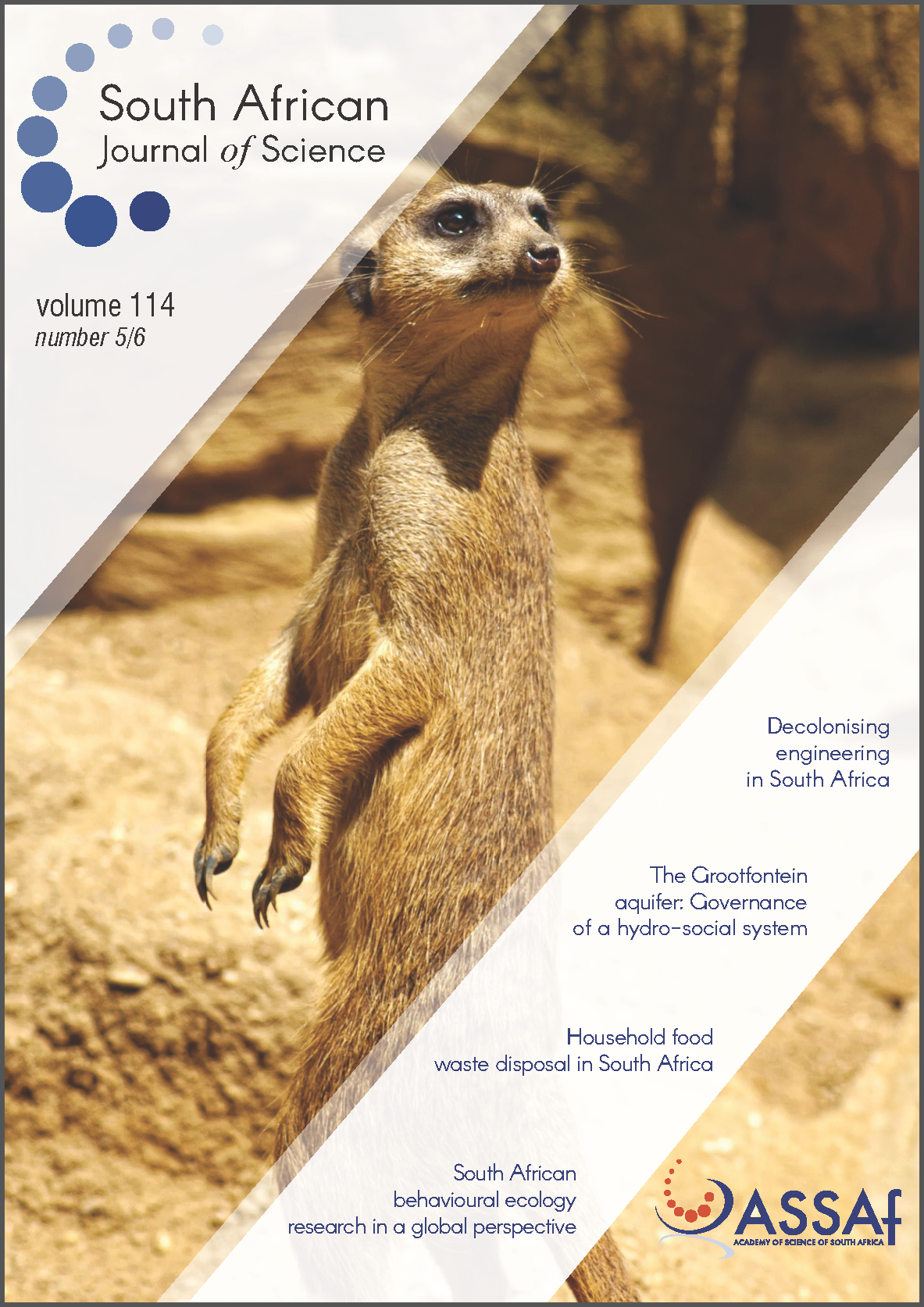
About the cover:
A meerkat (Suricata suricatta). Meerkats feature prominently in behavioural ecology studies, both locally and internationally. Le Roux explores the trends in behavioural ecology studies and places South African research in a global perspective.
Full online issue available here.
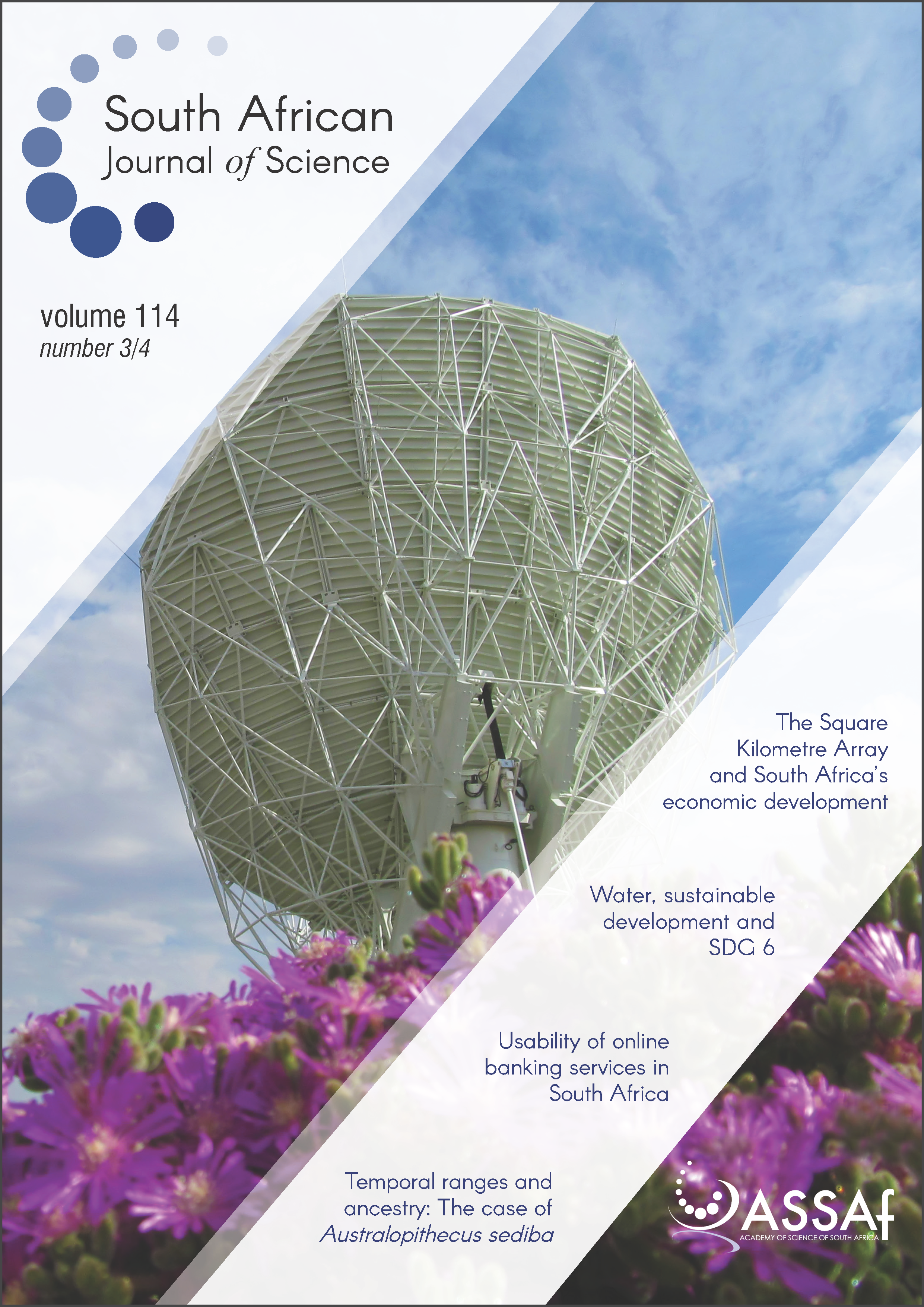
About the cover:
South Africa’s MeerKAT radio telescope under construction in the Karoo, August 2016 (photo courtesy of Dr Fernando Camilo). MeerKAT is a precursor to the Square Kilometre Array. In an article on page 78, Bhogal explores the factors affecting the impact of the Square Kilometre Array on South Africa’s economic development.
Full online issue available here
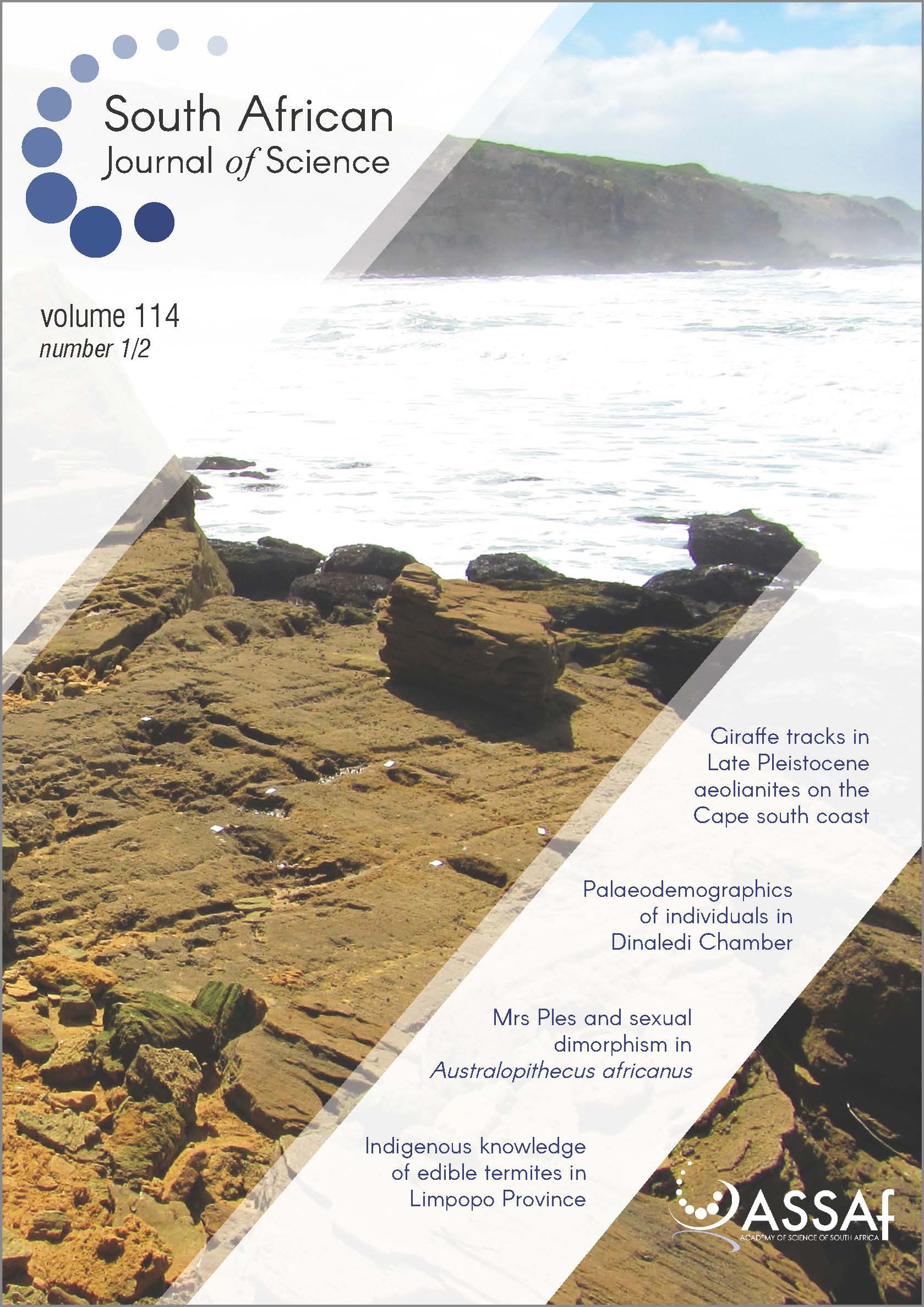
About the cover:
Ancient giraffe tracks perched above the Indian Ocean east of Still Bay (photo: Jan De Vynck). Helm and colleagues explore the unexpected discovery of these fossil giraffe tracks far from the area in which giraffe have previously been known to occur.
Full online issue available here
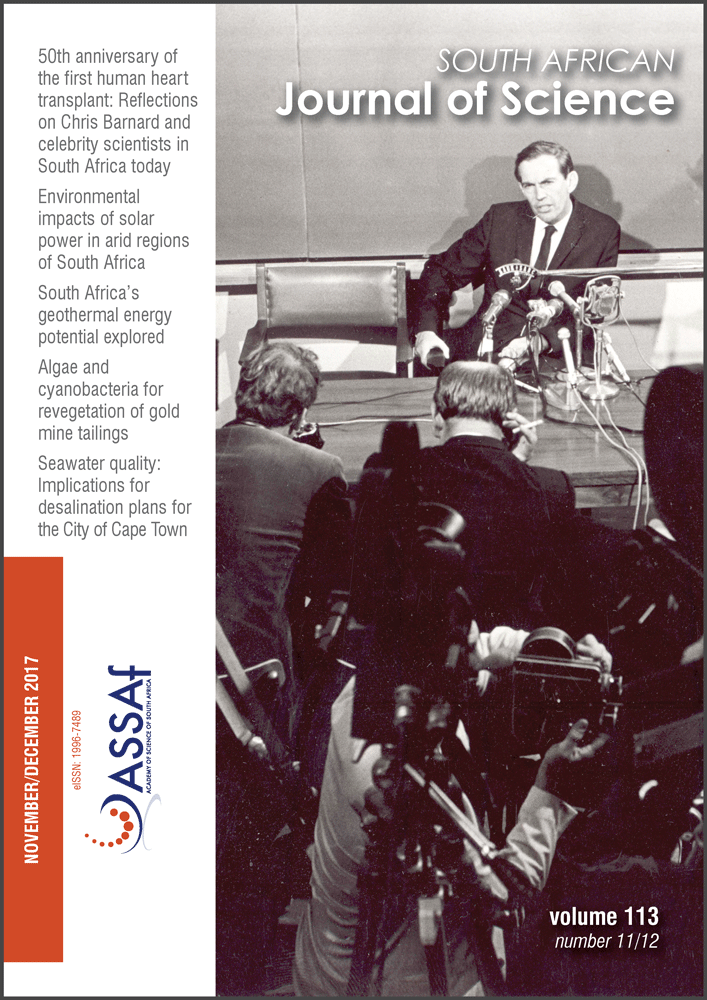
About the cover:
Chris Barnard at a press conference after performing the first human heart transplant on 3 December 1967 (photo courtesy of the Heart of Cape Town Museum). On this 50th anniversary of that historic event, Joubert examines the life of Chris Barnard and reflects on his subsequent scientific celebrity and Joubert and Guenther explore the role of celebrity scientists today and identify the publicly visible scientists in South Africa.
Full online issue available here
